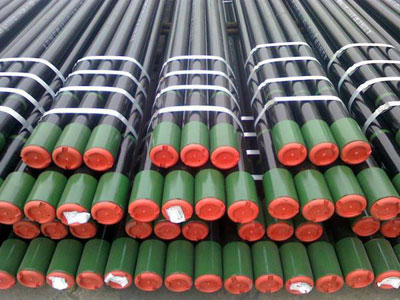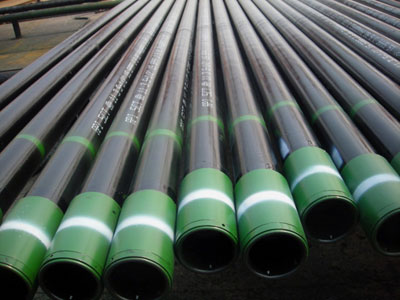API steel grades for tubing and casing
API standards for Casing and Tubing
API, shorted for American Petroleum Institute, is considered as one of the most authoritative and comprehensive principles for oil and gas industry. Products complied with API standards are always thought of reliable quality. Under the general standards, there are some subordinated specifications drafted for each specific OCTG product, such as API 5B, API 5CT, API 5D, API 5L and so on.
API 5B and 5CT are mainly used for tubing and casing, standardizing the chemical properties, steel grades, manufacturing methods, color coding, heat treatment, inspection, etc. Tubing and casing are supposed to withstand specific pressure in transportation of oil or natural gas, which means the steel material should have proper yield strength, therefore API 5B and 5CT lay specific standards of steel grade for tubing and casing to meet the general application purpose.


API Steel Grades
Steel grade refers to the yield strength of the products. API 5B and 5CT list nine categories of steel grades, namely H-40, J-55, K-55, N-80, L-80, C-90, T-95, P-110, Q-125. The numbers represent the minimum yield strength while the letters are arbitrarily placed, which has no relation with the properties just to provide a unique name for the steel grade. The bigger number is, the higher yield strength will be. API standards divide the nine categories into four groups, H, J, K, N in the first group, L, C, T in the second group, P in the third group and Q in the fourth group.- Tubing and casing of steel grade H, J, K, N in the first group are of relatively low strength. Grade H-40 is seldom stocked by suppliers while J-55 is normally used for shallow and relatively low-pressure wells. Grade K-55 is similar to J-55 except that the minimum tensile strength of K-55 is higher. Grade N80 is further divided into two types, N80-1 and N80-Q. Both types share the same tensile strength but differentiate in delivery conditions. Grade N80-1 can be either normalized or hot-rolling while N80-Q must be through quenching-and -tempering heat treatment before delivery.
- Grade L, C, T represent restricted-yield casing and tubing which are normally anti-sulfur and anti-corrosive. L-80 falls into three types, L80-1, L80-9CR and L80-13Cr. L80-1 is less expensive but is relatively easy to be susceptible to corrosion. The other two types, though expensive and difficult to manufacture, have strong abilities to resist corruption, therefore L80-9CR and L80-13Cr are recommended to be used in heavily-corruptive wells. C-90 is divided into two types, C90-1 and C90-2. Only C90-1 is suggested being used in sour conditions. T-95, which is a relatively high-strength steel grade, also has two types, T95-1 and T95-2.
- P-110 in the third group is a high strength steel grade, which allows quenching-and-tempering heat treatment. It can be adopted in deep wells of high pressure.
- Grade Q-125 is of high strength. If you need tubing or casing to bear quite high pressure, Q-125 is a good choice.
Color codes for API steel grade
In order to clearly distinguish the steel grade, tubing, casing and its coupling should be painted with color codes respectively. Color bands should be painted on tubing and casing body longer than 600mm to either end. The whole outer-body of the coupling needs to be painted color and then color codes.
You can download the chart of color codes for API steel grade
API 5B and 5CT provide various steel grades and color codes of each grade, offering detailed and overall information of casing and tubing, which help you clearly pick out the most suitable products for different well application.

